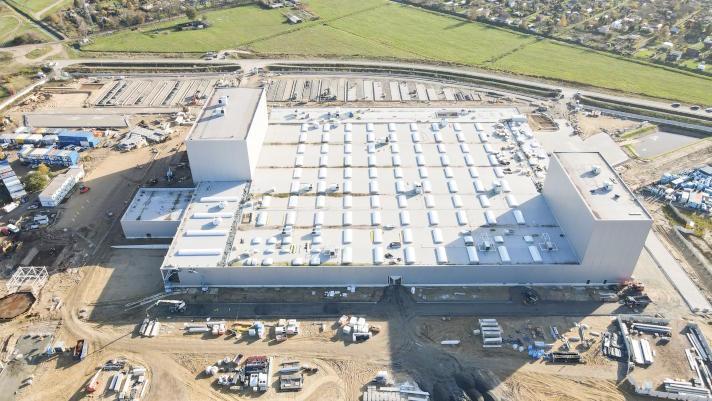
To reach climate neutrality in Europe by mid-century, we need to invest in making our electricity grids sustainable and emission-free, while boosting European green industry. Batteries are a key part of that challenge. For our industry to remain competitive and innovative, we need a domestic manufacturing base for lithium-ion batteries and other energy storage solutions.
The EU-funded Northstor+ project is working hard on exactly this. Their product – the Voltainer – contains a high-nickel lithium-ion battery cell, originally developed for electric vehicles, and is a more “energy-dense” product than those currently available on the market. This makes the Voltainer more performant, safer, cheaper and more flexible – and, most importantly, the greenest!
The project is a great choice for the EU Innovation Fund’s backing as it supports Europe’s ambition to create a world-leading battery industry and contributes to circular economy objectives. Here’s how.
A green battery market revolution
Northvolt, the company behind the project, has a clear goal: “to deliver the lowest carbon footprint possible for its products and develop the world’s greenest battery”, says Wilhelm Löwenhielm, the commercial lead whose job is to make sure there are customers for the Voltaine
The specifications certainly sound promising. The Voltainer will largely be manufactured with recyclable materials and, in the future, will incorporate recycled materials directly. The technology is based on lithium-ion batteries with a minimal CO2 footprint.
Northvolt has already struck a number of strategic partnerships and gained investments from large players in the energy storage industry, such as Fluence, Siemens, Vestas and Vattenfall. These partners believe the Voltainer will be key to their long-term success as it provides a sustainable alternative to the solutions currently available.
The technology can be used to respond to the fluctuating supply and demand of electricity in the power system. For example, solar and wind power could be harnessed and stored in such batteries for later use, namely during the days without wind or sunlight. Such energy storage solutions could also keep electric vehicles charging stations up and running where existing infrastructure cannot respond fast enough to demand.
How is the project progressing?
In a nutshell, it’s going strong. In the engineering hub in Stockholm, Sweden, the manufacturing processes have been validated and three rounds of sample production have been completed. The components for the samples have been purchased from more than 15 suppliers, mostly European. Following these thorough tests, the next sample will be the final version of the product design, to be used for certification and serial production.
Mass production of the Voltainer can then start already in 2023. It will take place in a new manufacturing site that is currently under construction in Gdańsk, Poland. The project will benefit the region, bringing new technological capacity and competences, and creating 500 new jobs, including in the Research and Development centre. Northvolt also cooperates with the local university and vocational schools, sharing knowledge and experience.
The EU support
In this critical phase of bringing the product to market, the Northstor+ project has received funding from the EU’s Innovation Fund – one of the world’s largest funding programmes for innovative low-carbon technologies. In the EU, polluters have to pay for their greenhouse gas emissions via the Emissions Trading System (ETS) – the world’s largest carbon pricing system. The money raised in this way gets reinvested into the Innovation Fund projects.
In this case, the funding helps to evaluate and test the product. The EU has also contributed to the construction costs of the new manufacturing site in Gdańsk.
The project’s mission is perfectly in line with the EU’s Green Deal Industrial Plan, and the Commission has just outlined, in its new proposal, how the Innovation Fund will be contributing to building net-zero industry in Europe.
Wilhelm agrees – he and the team of 300+ design engineers, manufacturing engineers, supply chain specialists, construction engineers and project managers “are proud to work on a project that enables the European transition to a net-zero future”.
Details
- Publication date
- 20 April 2023
